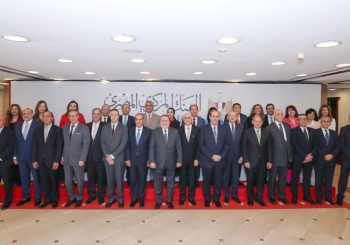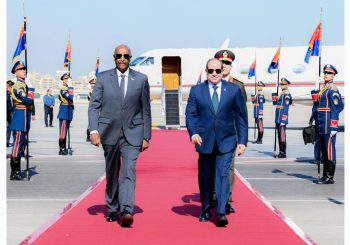The humanitarian situation in Gaza is taking a turn for the worse. As of 7 October, 2,750 Palestinians have been killed and 9,700 wounded as a result of Israeli airstrikes on Gaza. 1,000 of those killed are still stuck under the rubble, Hamas Interior Ministry Spokesperson Eyad Al Bozom revealed, warning of a resulting environmental catastrophe.
Hopes for a ceasefire that would allow the entry of much-needed humanitarian aid have been shared by Palestinians, the international community, and concerned onlookers.
Following Sunday’s 15 October meeting between Egyptian President Abdel Fattah Al Sisi and U.S. Secretary of State Antony Blinken, two Egyptian security sources told Reuters that Egypt, Israel, and the United States have reached an agreement for a ceasefire in southern Gaza.
The agreement, if confirmed, would have commenced at 0600 GMT on Monday, 16 October, which coincides with the reopening of the Rafah border crossing, facilitating the entry of humanitarian aid and the evacuation of foreign nationals.
Blinken confirmed that an agreement was reached regarding humanitarian aid, following his visit to Cairo.
Israeli Prime Minister Benjamin Netanyahu seemed to reject the reported agreement on Monday, 16 October, stating, “There is currently no ceasefire, and humanitarian aid in Gaza is not linked to the evacuation of foreigners,” according to a statement from his office.
Israel Defense Forces (IDF) spokesman Richard Hecht reaffirmed this view.
“There is no agreed ceasefire that I’m aware of. I’m seeing all these reports, too. There’s nothing I can confirm,” Hecht told the BBC.
The media office of Hamas was not informed of the humanitarian ceasefire that was reportedly being discussed at the Rafah border.
In anticipation that the Rafah border crossing will reopen, enabling aid to enter and some foreigners to exit Gaza, large crowds have gathered near the border. It remains, nonetheless, closed.
The U.S. Embassy in Israel issued a notice to locals in the event of a brief opening of the border crossing.
“It is unclear whether, or for how long, travelers will be permitted to transit the crossing. If you assess it to be safe, you may wish to move closer to the Rafah border crossing,” the embassy said, adding there may be “very little notice if the crossing opens, and it may only open for a limited time.”
Following a meeting of the National Security Council, Sisi’s office expressed Egypt’s rejection of any plan that would displace Palestinians at the expense of other nations. A statement released on Sunday, 15 October underscored that Egypt’s own security was considered a red line.
The Humanitarian Crisis Worsens
Last week, the operation at the Rafah crossing into Egypt was disrupted due to Israeli airstrikes on the Palestinian side of the crossing.
The IDF issued a directive instructing the evacuation of the northern area of the Gaza Strip on Friday, 13 October. Northern Gaza’s 1.1 million residents were expected to leave the region in less than 24 hours. The UN has described the evacuation order as “impossible,” warning of a humanitarian crisis of great proportions.
In response to Israel’s directive, approximately half of the northern Gaza population, or some half a million individuals, have fled to the southern region.

According to a UN official, shelters in southern Gaza are overwhelmed due to tens of thousands of people fleeing from Israeli airstrikes in the northern part of the coastal enclave.
“We are at a very limited capacity in the south. There aren’t shelters available in the south to accommodate the numbers of people arriving,” Lynn Hastings, the UN Resident Coordinator and Humanitarian Coordinator for the Occupied Palestinian Territory, told UNTV.
In addition to shelter shortages, southern Gaza is facing critical shortages of essential supplies, including food, water, and fuel. Hastings explained that while there is some food available at distribution sites, accessing it has become challenging due to the ongoing bombardment. The fuel shortage is having widespread consequences, affecting desalination processes and healthcare facilities.
“No fuel means no desalination, and Gaza heavily relies on desalination. It also means no healthcare because hospitals require electricity,” Hastings emphasized.
Israel’s ambassador to the United Nations noted that the water supply had been partially restored in southern Gaza, but there was no mention of whether electricity had been reinstated for desalination purposes.
A UN humanitarian team is currently positioned at the Egyptian side of the Rafah crossing, awaiting approval to transport aid supplies into Gaza.
According to a statement from the United Nations Relief and Works Agency for Palestine Refugees in the Near East (UNRWA), an advance team has been dispatched to Egypt to prepare for the potential opening of a humanitarian corridor to deliver aid supplies to Gaza.
“For the fifth consecutive day, Gaza has had no electricity, pushing vital services, including health, water and sanitation to the brink of collapse, and worsening food insecurity,” the UNRWA statement added.
The Rafah crossing, the sole remaining route for supplies into Gaza not controlled by Israel, has experienced frequent closures throughout the past week.
Aid from multiple countries and organizations has been delayed in Al Arish due to Israel’s reluctance to allow the Rafah crossing to reopen, threatening that the IDF will target any humanitarian aid that crosses from the Egyptian side.
This situation persists despite Egypt’s efforts to exert pressure on the international community by blocking the passage of foreign nationals until a humanitarian aid agreement is reached.







Comments (0)